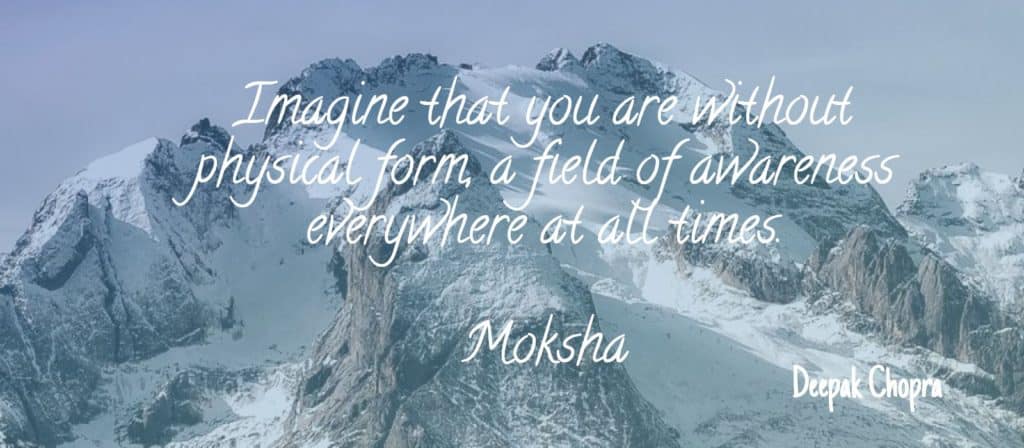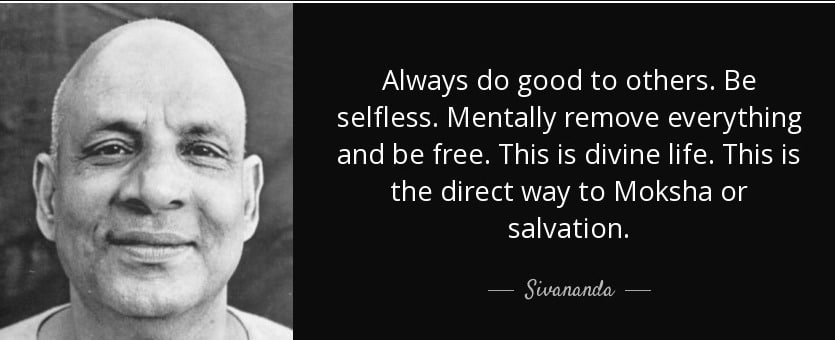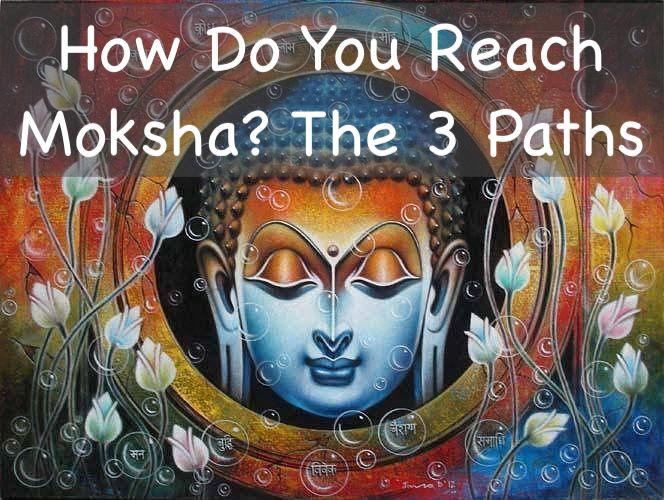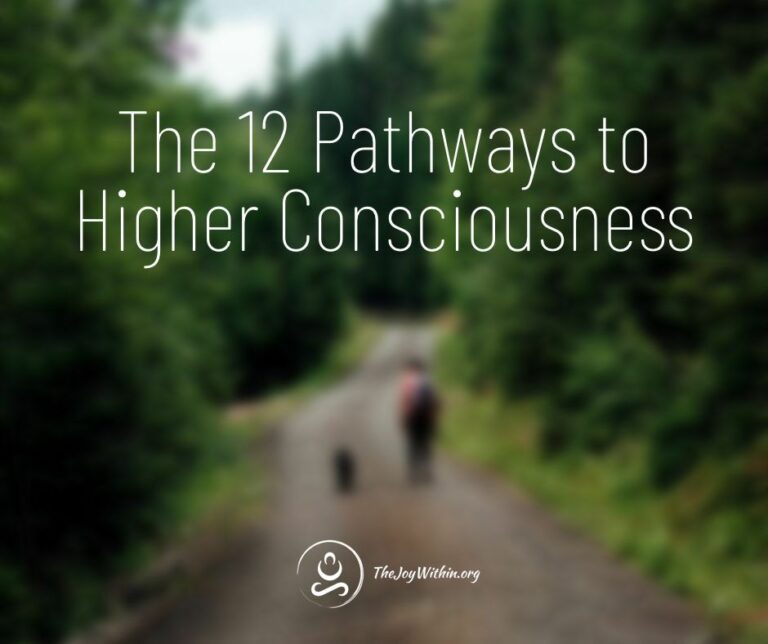In Hindu philosophy, Moksha is an enlightened state of being in which you have completed the cycle of reincarnation and transcended the need for future physical lifetimes. It is a state of complete emotional freedom and non-attachment, with an awareness of your true-bliss nature, in connection with all things.
Reaching moksha is the end of your soul’s spiritual journey on the physical plane, and is considered the highest and most desirable goal: last of the four Purusharthas.
While there are many different practices you can use to achieve moksha, traditionally there are three yoga paths to self-liberation.
Related Post: How To Be Free. The Path of Self-Liberation.
How To Reach Moksha: The Three Paths of Yoga
The 3 yogic paths to self-liberation and moksha are Karma Yoga (the path of action and good deeds), Bhakti Yoga (the path of devotion to God), and Jnana Yoga (the path of knowledge and wisdom).
In some teachings, a fourth path – Raja Yoga – is added, which is the path of mental discipline and meditation.

Karma Yoga: The Path of Action
Karma refers to the system of corresponding energy, which determines how the events of one’s life unfolds. In Hindu philosophy, every action creates karma, and this karma can be good or bad.
In the West, you might think of Karma as the idea that “what goes around comes around,” though with the twist that what you experience in this lifetime may be the result of karma from past lives.
The practice of Karma Yoga is not simply to focus on good deeds, however. It is to create an intentional life, in which you perform actions selflessly, without consideration of personal gain. This practice applies to every action you take, and goes hand in hand with the Buddhist teachings of practicing loving-kindness.
Related Post: Gary Zukav explains Karma and How to Release Negativity.
Bhakti Yoga: The Path of Devotion to God
Bhakti Yoga is a practice of constant devotion. Many consider this to be the easiest of the three paths; it requires one to apply unconditional love to every aspect of his life.
However, to truly follow this path requires constant discipline and devotion, as Bhakti yoga, in its purest form, asks the practitioner to surrender everything in life to God’s love, and to treat everything with complete acceptance and non-judgment. From this state, one opens oneself to a higher, divine love.
Traditionally, there are 9 principles (or limbs) of Bhakti Yoga, which are supposed to guide and assist you on the path.
- Sravana – the study of scripture.
- Kirtana – chanting hynns or mantras.
- Smarana – the practice of dutiful action.
- Padasevana – service through heartfelt intention.
- Archana – ritual and ceremonial worship.
- Vandana – worship through prostration.
- Dasya – following the words and orders of God.
- Sakha-bhava- establishing a relationship with God as family.
- Atma-nivedana – surrendering oneself entirely to God.

Jnana Yoga: The Path of Knowledge and Wisdom
Jnana Yoga is the path of knowledge and wisdom. It requires a life-long pursuit of knowledge and a commitment to disciplined self-reflection and awareness.
Their are four pillars, or steps, involved in the pursuit of Jnana Yoga.
- Viveka – the pursuit of discernment and a quest to understand what is true and what is false, what is temporary and what is eternal.
- Vairagya – the separation of one’s true self from the idea of worldly posessions.
- Shatsampat – understanding the 6 virtues of Shama (tranquility), Dama (restraint), Uparati (withdrawal), Titiksha (acceptance), Shraddha (trust), and Samadhana (focus).
- Mumukshutva – the practice of leaving desire behind you in order to attain moksha and achieve self-liberation.
Raja Yoga : The Path of Meditation
While traditionally there are only three yoga paths to achieve moksha, in some texts a fourth path – raja yoga – is added.
Raja yoga is a specific type of meditation in which the practitioner uses a series of psychological experiments in order to deepen his spiritual connection. These experiments include different exercises (including pranayama techniques and common mantras) for concentration and focus, with the idea being that through disciplined mental practice, one can come to know the truth of his own existence.
What Happens To The Soul After You Attain Moksha?
You can reach moksha by following any of the yoga paths identified above, but what happens to the soul after moksha is achieved?
Once you get to a state of moksha, you are an enlightened being. This means that you have a strong sense of unity with the divine energy. You achieve self-realization, as you understand yourself as One with All That Is, and you no longer have a need to focus on the physical self. As such, you release the ego’s attachment to the body, and enter a state of communion with your divine nature.




